If you like to take your dogs along on your outdoor adventures like we do, there are loads of fun options available on America’s public lands. While many people gravitate towards visiting the country’s more than 400 national parks, our national forests are no less beautiful. And both are very conducive to traveling with dogs! But keep in mind, there are different rules between them with regards to allowing pets. Let’s take a look at some of the ins and outs of traveling with dogs to our nation’s parks and forests.
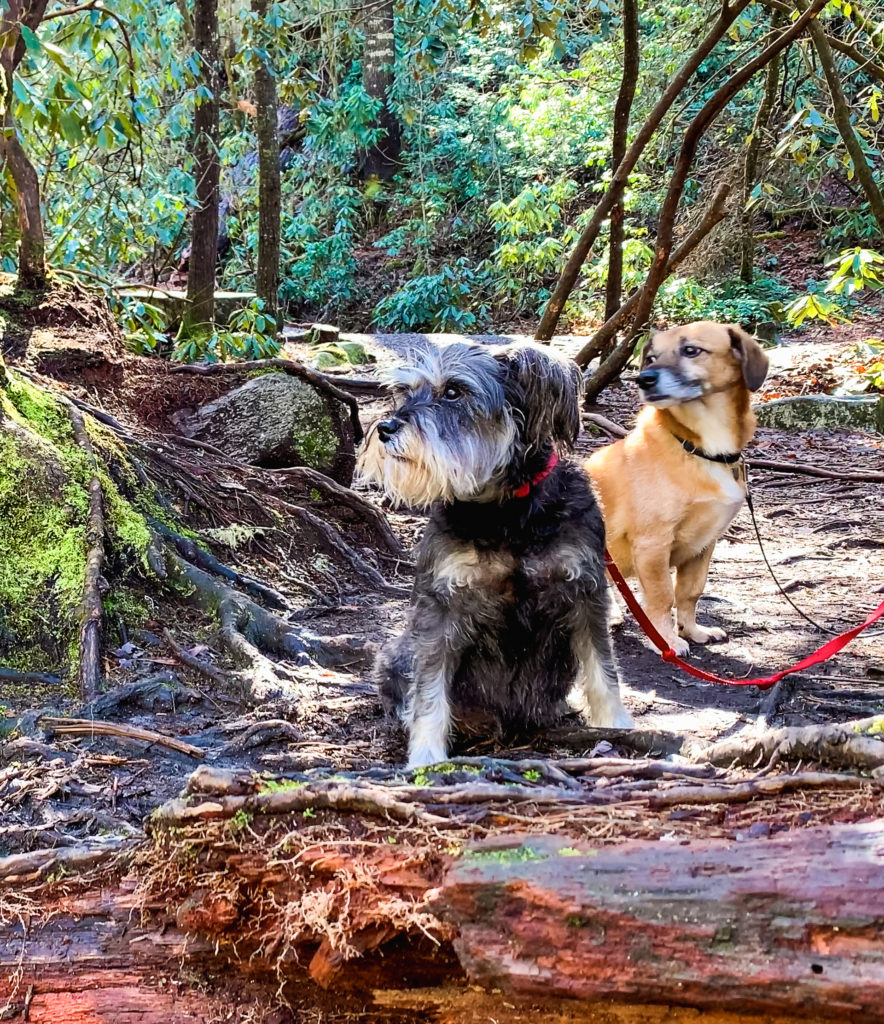
What Is The Difference Between National Parks And National Forests?
Some of the differences between national parks and national forests (along with national wildlife refuges, and wild and scenic rivers) is that they are each administered by different federal management agencies, for starters. Also, national parks have more amenities and are more geared toward protecting a variety of resources like historic landmarks and the conservation of the eco-system and wildlife.
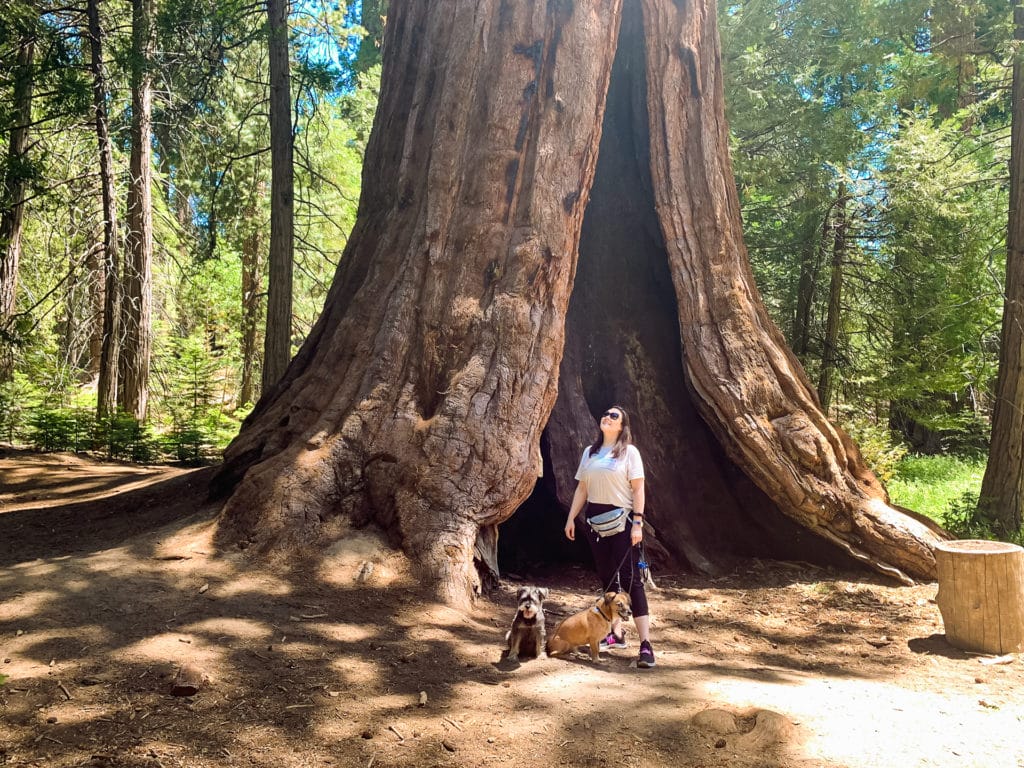
National forests tend to be located near national parks and also tend to be less crowded. Fun fact: forests can also act as a protective buffer zone around parks. While national forests have less amenities, they do allow dogs on the trails. National parks, however, usually restrict dogs to developed areas.
All public lands allow service dogs – as they should! Be sure to check the rules and regulations for whichever specific location you’re considering and choose accordingly.
How Much Does It Cost To Visit A National Park?
This varies by park, but on average, most national park entry fees cost $25-$30 per vehicle. In some cases the fees are per-person, averaging $10-$15. Check the official sites for more specific info on the park you’ll be visiting to be sure. These are reasonable rates, for visiting just one park in a year. But keep reading if your plans are more ambitious, as there’s something we think you should know about if you don’t already.
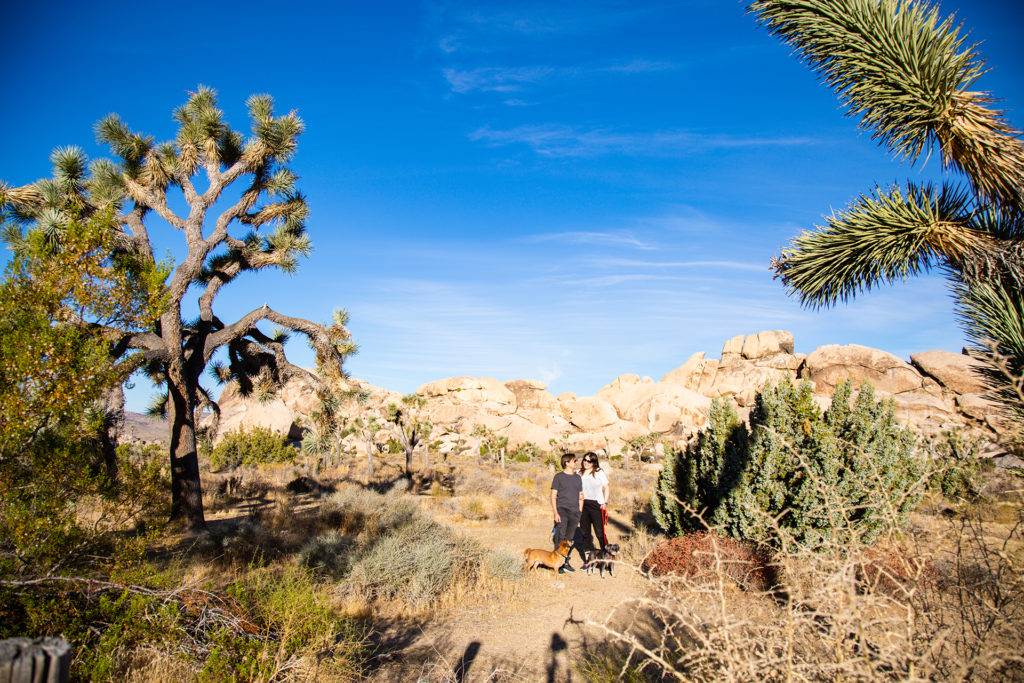
Why You Should Buy An America The Beautiful Annual Pass
If you’re considering visiting more than one national park in a year, you should absolutely spend the $80 on one of these passes. 3 park visits and the pass pays for itself. The benefits?
1) Anyone can purchase this interagency annual pass, and they’re honored nationwide at all Forest Service, National Park Service, Bureau of Land Management, Bureau of Reclamation, and U.S. Fish and Wildlife Service sites charging entrance or standard amenity fees.
2) They’re valid for twelve months from the month of purchase, expiring the last day of the month punched.
3) Any two individuals can sign the pass and both are considered pass holders.
4) Admits pass holder and any accompanying passengers in a private non-commercial vehicle. At any per-person fee sites, admits pass holder and up to three persons.
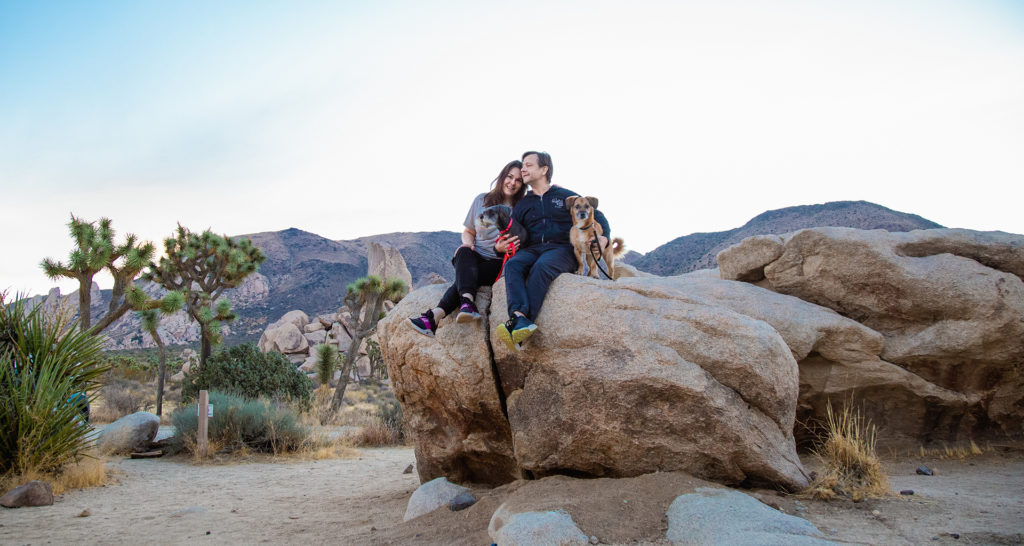
No-brainer! You can purchase an America the Beautiful Pass either online at USGS or at most national forest or grassland offices.
We purchased ours at the entrance gate of Joshua Tree National Park in California while traveling with our dogs. Check out our vlog Camping In Joshua Tree With Dogs | SoCal Desert Road Trip!
How Much Does It Cost To Visit National Forests?
In most cases, there is no admission or pass required to visit national forests, but there will likely be a suggested donation or a parking fee. These might vary based on the type of vehicle. Again, check the official sites for more specific info on the national forest you’ll be visiting to be sure.
While we love a good outdoor adventure and fully appreciate all the beauty nature has to offer. But we’re not too proud to admit that we’re more city slickers than anything else. We learn something new with every round of research before a trip. Then we learn from the unexpected lessons during the trips. So, we’d like to share a few tips that we learned along the way that we hope will be helpful in your own planning.
3 Hot Tips For Visiting National Parks, National Forests, Or Public Lands:
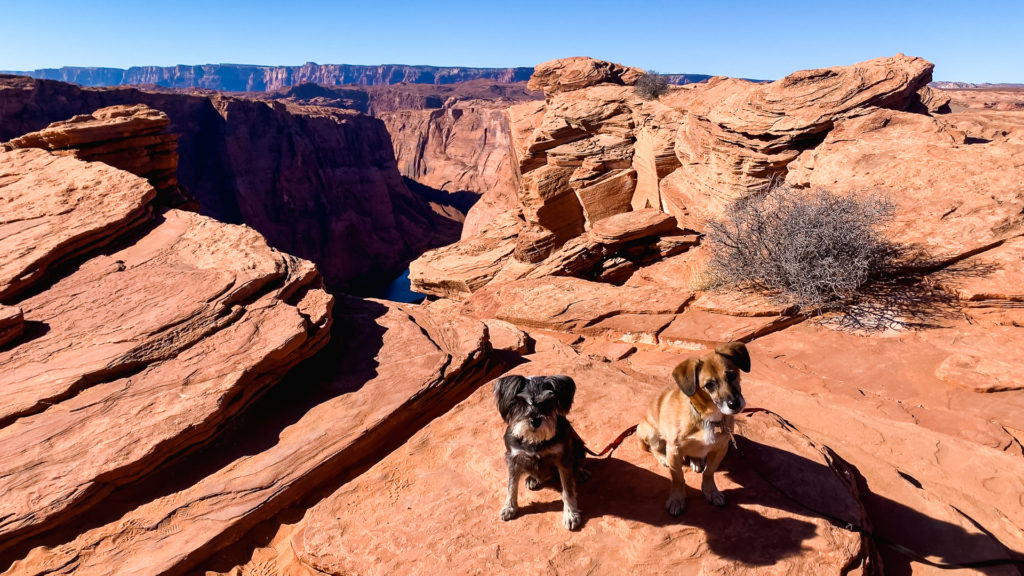
1) Make sure your plans are flexible and always call ahead – if not day-of, then the day before. Nature is unpredictable. You don’t want to drive all the way up into the mountains before you find out there’s a closure due to newly fallen trees, an earthquake, wildfire, or other natural phenomenon.
2) Keep a version of your directions offline! Do all of your research and mapping before you go. Save an offline version (to your device or printed out) because it will come in handy when you get up into the forest and discover you have no cell service. Watch when this happened to us in our vlog Dog-Friendly Sequoia National Forest | Easy Day Trip From Los Angeles.
3) Camping. If you plan on spending a night under the stars you have options, thanks to BLM-managed lands. Obviously, there’s the developed campground option, which comes with facilities, which come with fees, understandably. But, if you just need to crash for the night and are ok with roughing it a bit, there are the BLM dispersed campgrounds. A.K.A., free. “These are public lands away from developed recreation facilities. Most of these lands are open to dispersed camping, as long as it does not conflict with other authorized uses or in areas posted ‘closed to camping,’ or in some way adversely affects wildlife species or natural resources.” See BLM.org for specifics, limitations, or restrictions.
To wrap up, while we’ve been doing a lot of advising about trip planning (like a couple of dull sticks in the mud), we’d also like to remind you that visiting national parks, forests, and public lands is supposed to be FUN and relatively carefree! And how can it not be, if you’re traveling with your dogs? So, yes – inform yourself and prepare, but also be sure to leave plenty of room for the unplanned and unexpected. Because after all, isn’t that usually where the real magic of travel lies?
